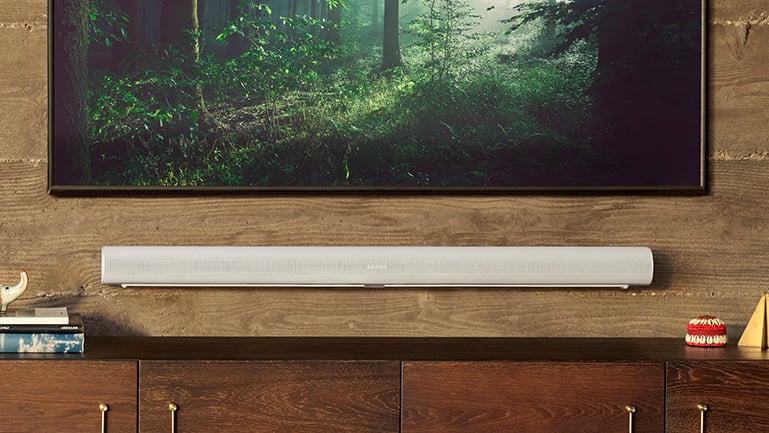Disappointed by the thin, lackluster sound quality coming from your TV’s speakers? You’re not alone. Here we will see how to buy the right soundbar, Even many modern TVs skimp on audio components, leaving viewers yearning for a more immersive home theater experience. Upgrading your entire sound system might seem daunting, but there’s a simpler, more affordable solution: the soundbar.

Soundbars offer a significant audio boost over built-in TV speakers without the complexity or cost of a full surround sound system. They come in a variety of configurations, sizes, and price points to suit nearly any living space and budget. Before you dive headfirst into soundbar shopping, however, consider this checklist to ensure you choose the perfect model to elevate your home entertainment.
Why do you need a Soundbar?
Let’s be honest, most modern televisions cover aesthetic appeal in visualization rather than in audio. Juxtaposing slimness and style with the end product tends to result in thin sound reproduction where explosions sound like whispers, and dialogue is given the treatment of coming from a far-off distance. How to buy the right soundbar, This is where the eternal underdog – the soundbar steps in to defend your ears (and your speakers) from mediocre listening experiences.
Here’s why a soundbar should be your go-to solution for better home theater sound:
Simple Solution, Dramatic Improvement: Compared to complicated surround sound systems sound bars are incredibly easy to install and use. A small rectangular speaker placed discretely beneath your TV transmits your audio – weak and tinny – to strong and filling the room. You will discover sounds that you may not have paid attention to in the past, ranging from the gentle footstep sound of say, a character approaching to the intense and thundering music of an action film.
Space-Saving and Stylish: Soundbars do not consume much space at all, and they can be easily mounted underneath most TVs, ensuring that they do not take up too much of your living room space. These are manufactured in many stylish versions to fit well in your home theatre system.
Affordable Audio Upgrade: In comparison to a full-scale surround sound system, soundbars present a definite auditory enhancement at a much lower cost. This gives you a significant improvement in the sound quality while avoiding spending too much money.
Versatility Beyond Movies: Soundbars are no longer the preserve of movie nights. Receive high-quality sound for the most popular TV broadcasts, sports matches, and listening to music. Some soundbars also come with Bluetooth to wirelessly stream music from your phone or tablet, for example.
10 Things to consider while getting a soundbar
Now you are planning to say goodbye to the whimsical sound of your TV and add more depth to your home theatre by acquiring a soundbar. That’s a wise move! However, with so many soundbars available on the market today, choosing the best one can be a challenging task. Fear not, future audiophiles! Here’s a breakdown of 10 key factors to consider before you hit “buy” on your new soundbar:
1.Size Matters: Decide on How to Connect the Soundbar to the TV
Audio properties are intimately connected with appearance: aesthetics and acoustics. In this regard, it is best to choose a soundbar that has a width that matches that of your television. A soundbar substantially smaller than the width of the television could be unbalanced and have holes on either side. On the other hand, when the soundbar is wider than the TV, it can make the appearance visually awkward and unappealing. Thus, most soundbars are effective for TVs 43 inches and above, and there are some compact soundbars for smaller TVs. Before moving up to the soundbar, take the width of your Television so that the soundbar will not look out of proportion.
2. Connectivity Options: First of all, think about your devices.
Consider how you will integrate your devices into the soundbar of your choice. HDMI ARC/eARC is the primary connection for most soundbars as it is a convergence of audio and video transmission for connected TVs. ARC/eARC enables one to control the volume of the soundbar easily using one’s Television remote control. Optical connections are also often used but may not support even the latest audio codec like Dolby ATMOS. If you’re going to connect other devices such as game consoles or streaming players, look for extra HDMI options or optical connections in the soundbar. Wireless music control via Bluetooth connectivity is a bonus when you wish to stream your favorite tunes from your phone or Tablet.
3.Immersive Audio Formats: Dolby Atmos vs DTS: X.
For a truly cinematic surround sound experience, consider soundbars that support immersive audio formats like Dolby Atmos or DTS: X. Such formats make the sounds in the room appear more realistic and multidimensional, with sounds passing from side to side and even above. However, to fully realize what immersive audio offers, one is going to need a soundbar with speakers that fire upwards or surround speakers if the model calls for it. Also, make sure your movies and streaming services support Dolby Atmos or DTS:X for the immersive audio experience to work.
4. Channel Configuration: Introduction to the Number of Speakers Needed
Soundbars come in various channel configurations, typically ranging from 2.0 (two channels) to 5.1.2 (five channels, one subwoofer, and two upward-firing speakers). A 2.0-channel soundbar offers basic stereo sound, while a 3.1 channel adds a dedicated center channel for clearer dialogue. For a much more real immersion, soundbars with more channels and speakers that lookup will reflect sound to the ceiling. Remember, the chattier the system, the more expensive it is.
5.Power Output: Beats the Space or Just the Front Half?
The output wattage of a soundbar is another factor that defines the loudness levels that the soundbar is capable of, and how effectively it can throw sound around the room. In general, the wattage of a speaker implies its loudness or the total amount of acoustic pressure that it can produce. If you have a big living room or like watching your movies at loud volumes, it will be wise to go for sound bars with high watts of power rating, about 300 watts or more. For compact rooms or those who do not intend to make use of high volumes, a relatively small soundbar with a power output of 100-200 watts will be sufficient.
6.Subwoofer: Built-In or Separate?
A subwoofer is another speaker designed for low-frequency sounds, which is often placed separately from the rest of the speakers. Some soundbars come with their subwoofers but the bass may not be powerful enough for many people wanting intense bass for an action film or music. If you are a bass lover, then, a sound bar that comes with a subwoofer could prove to be an even better option because it offers more profound and dynamic bass throughout the room. However, this adds another ‘player’ to the scene and you might need more space to put it.
7.Ease of Use: Cost and ease of setup is everything
It is a widely understood fact that Soundbars are quite easy to operate. For convenience, choose models that have simple and intuitive controls and clear instructions on how to connect the devices. Many soundbars come with additional features such as remotes that can also adjust the TV volume thereby eliminating the need for two remotes. These should include the HDMI ARC/eARC which provides a one-cable connection to the television, and the Bluetooth which makes it easy to play music.
8.Brand Reputation: Reliability and Customer Service
It is true that when investing in any electronics, it is customary to look into the brand reputation of the product. It is wise that you get your soundbars from reputable manufacturers of quality devices and companies whose after-sale services are reliable. Visit the company’s websites and social media pages to discover what current users think about the brand’s soundbars in terms of audio performance, sturdiness, and after-sale care.
9.Price vs. Performance: Continue to look for that target sweet spot.
The availability of soundbars in the market is highly diverse, and it is not by chance: that their cost may vary, depending on their characteristics. It is expected that high-end models capable of processing audio formats that require more channels and the models that come with subwoofers will be more expensive. However, do not feel compelled to go over the top. Medium-sized bar with simple functionality can be perfect for everyday use, or when you don’t have much space for speakers and is affordable as well. To improve your chances of finding the soundbar that will be of ideal value for your money, set your budget beforehand and identify the features that are most important to you.
10. Reviews and Ratings: Wisdom of crowds
Never forgo the potential of online reputation through recommendations and rankings from other users.Here we seen how to buy the right soundbar. By doing this you can find accurate information about selected soundbars and also customers’ experiences in various forums. Focus on the merits and demerits other people note varying from the sound quality and features, the simplicity and convenience of the product, to its cost. This collective wisdom will assist you in pointing to anything that can be found to have a weakness or perhaps underscore some aspects that might not be easily noted from the descriptions.



